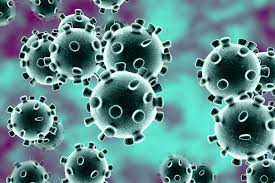The Coronavirus: What You Need to Know

The Corona Virus is headline news. The disease, origin, and the worldwide spread has dominated the news-and has driven the public to a place of worry and fear. Corona virus has been added to the list of epidemic diseases the world has been introduced to since the dawn of time.
What is corona virus? Corona virus, or COVID-19 is a respiratory illness that can spread from person to person. It is caused by a novel corona virus that was initially investigated in Wuhan, China. The virus has penetrated the United States, with the first case being reported on January 21,2020 on the west coast. Speculations over the Corona Virus origin has been linked to animals, most specifically Asian bats. But there is still much to be done regarding the exploration of the disease and most importantly a cure for it.
The virus is spread through close contact with people that have Corona, or by interacting with surfaces where it may be. Patients with COVID-19 have had mild to severe respiratory illness with symptoms of fever, cough and shortness of breath. Complications that arise from the virus include pneumonia in both lungs, multi organ failure and in some cases, death. The symptoms are very similar to the symptoms exhibited in individuals with the flu.
How can you stay safe? Advice given by the World Health Organization includes admonition to stay away from people that are sick, covering your mouth or sneezing with a tissue and cleaning and disinfecting frequently touched objects. Basic hygiene routines are stressed such as washing your hands frequently with hot water, and for at least twenty seconds.
Those that have traveled are quarantined and tested for Corona Virus, and any that exhibit symptoms are asked to seek immediate medical attention. There is currently no vaccine for COVID-19, only symptom relief, so the best treatment is to avoid contact with those that are sick.
The attention surrounding COVID-19 initially focused on the unknown element of the global disease, which generated legitimate fears. So far the COVID-19 fatality rate is between 3-4% globally, and less severe cases have seen people recover within a week or two of contracting the virus. This recovery can even happen without hospitalization.
On Tuesday, the National Institute of Allergy and Infectious Disease director told US senators “It will take at least a year and a half to have a vaccine we can use”. So a cure is far from close. There are countless institutions working to develop a usable vaccine. Governor Cuomo declared a state of emergency for New York State, including a the closure of all non-essential business, schools and public gatherings. How this disease and its spread will effect the remainder of this school year and the upcoming summer is yet to be seen, and cannot be predicted as this story goes to print.
In the meantime, it is important that we heed the preventative measures to ensure our medical safety, but it is also important that we adhere to the injunctions imposed by the Governor Cuomo- such as social distancing, no public gatherings, and the self-awareness not to enter the public if you’re feeling sick. Together, we can flatten the curve!

